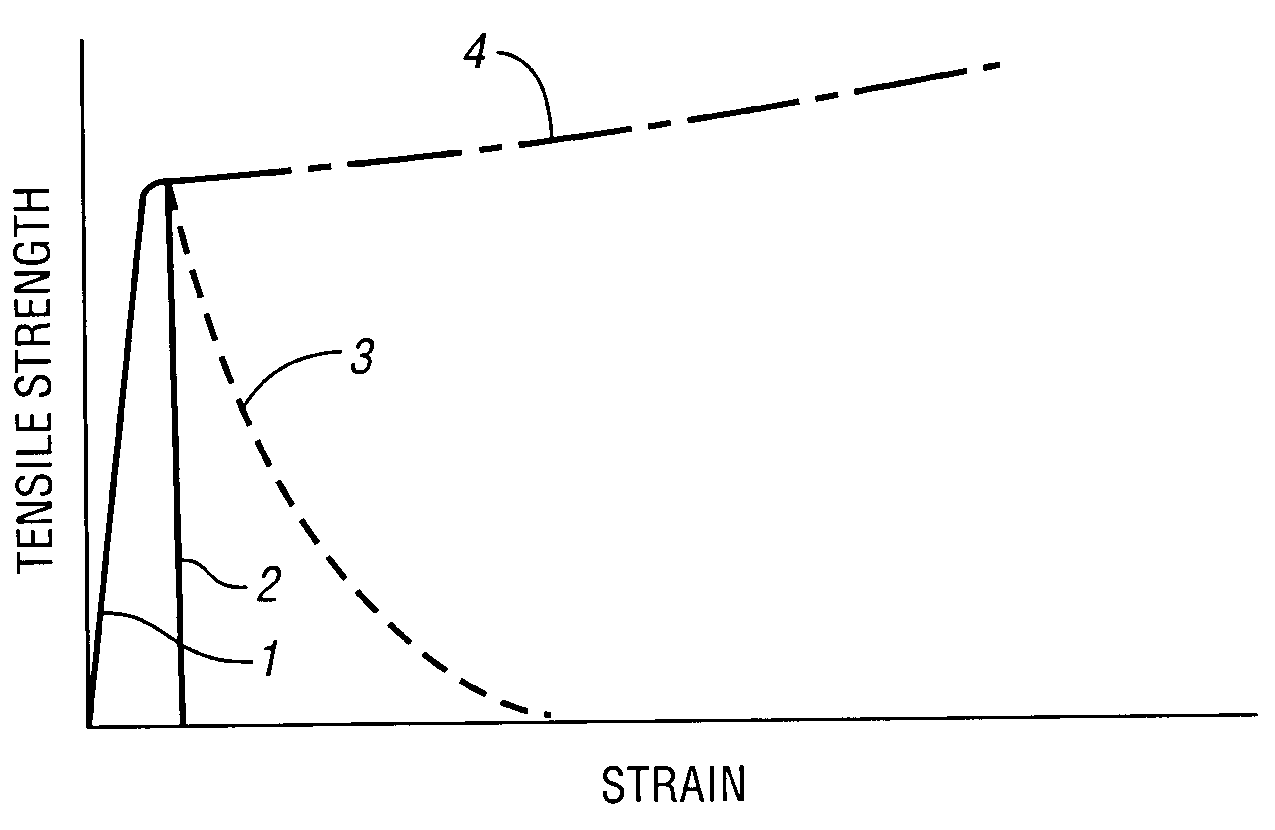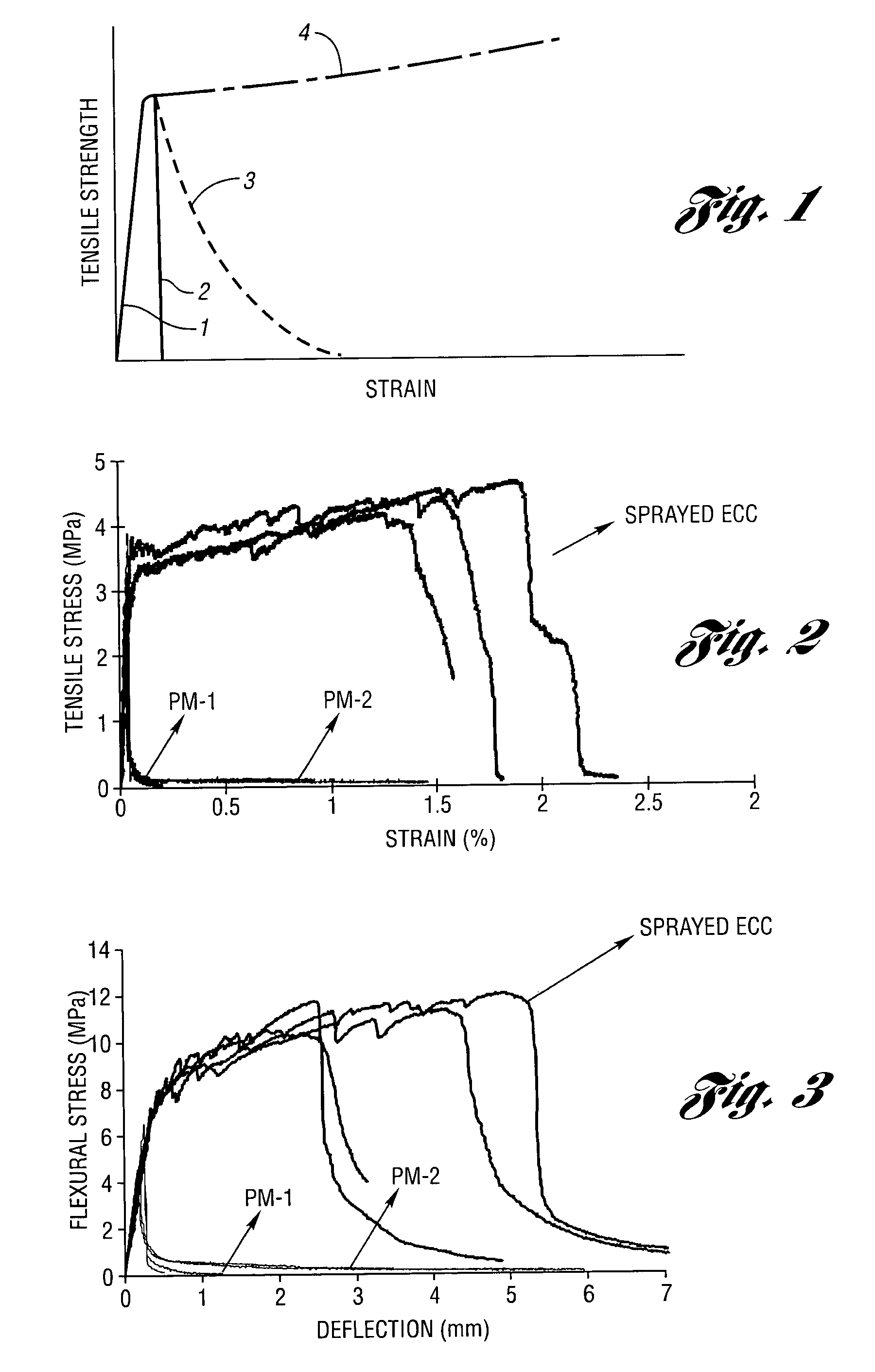Sprayable, strain-hardening cementitious compositions
- Summary
- Abstract
- Description
- Claims
- Application Information
AI Technical Summary
Benefits of technology
Problems solved by technology
Method used
Image
Examples
example 1
[0047] The exemplary mix set forth below for preparing sprayable composites, comprises cement, water, sand, fly ash, viscosity agent, superplasticizer, and discontinuous short fibers. The non-Newtonian additive is the preferred calcium aluminate cement. A specific example of a weight-based composition of a sprayable strain hardening cement is as follows:
TABLE 1CFiberPC1 / CCA / CW / CS / CFA / CVA / CSP / C(Vol %)0.950.050.460.800.300.00050.00752.00
(C: cement; PC1: Type I Portland cement; CA: calcium aluminate cement; W: water; S: sand; FA: fly ash; VA: viscosity agent; and SP: superplasticizer)
[0048] The cements used are Type I Portland cement from Lafarge Cement Co., MI, USA and calcium aluminate cement available as CA-25C from Alcoa World Chemicals Co., USA. Fine sand with a size distribution from 50 to 150 μm, available as F110 through US Silica Co., MN, USA, is used for sand. Fly ash used is class F fly ash with a size distribution from 10 to 100 μm from Boral Material Technologies Inc., ...
PUM
| Property | Measurement | Unit |
|---|---|---|
| Fraction | aaaaa | aaaaa |
| Fraction | aaaaa | aaaaa |
| Fraction | aaaaa | aaaaa |
Abstract
Description
Claims
Application Information
 Login to View More
Login to View More - R&D
- Intellectual Property
- Life Sciences
- Materials
- Tech Scout
- Unparalleled Data Quality
- Higher Quality Content
- 60% Fewer Hallucinations
Browse by: Latest US Patents, China's latest patents, Technical Efficacy Thesaurus, Application Domain, Technology Topic, Popular Technical Reports.
© 2025 PatSnap. All rights reserved.Legal|Privacy policy|Modern Slavery Act Transparency Statement|Sitemap|About US| Contact US: help@patsnap.com


